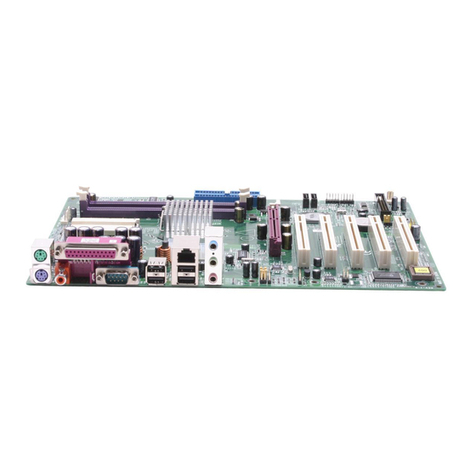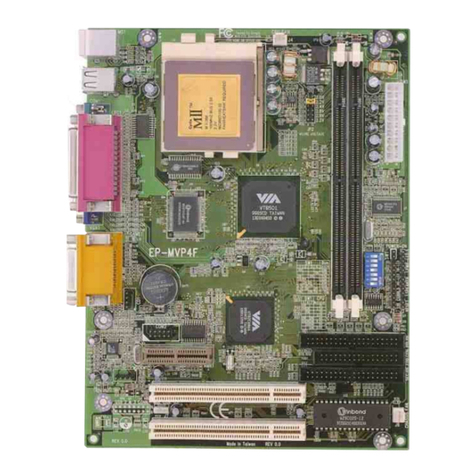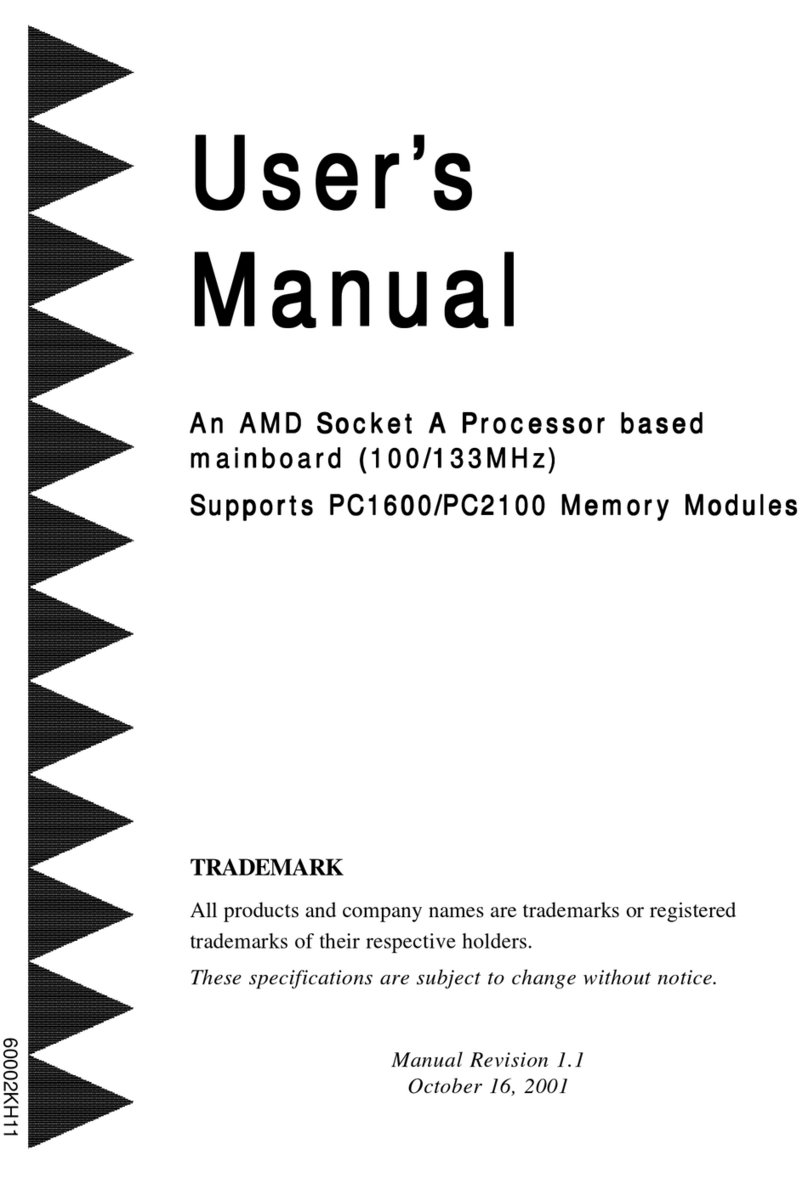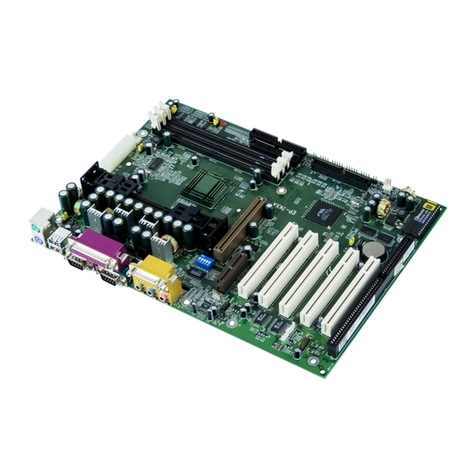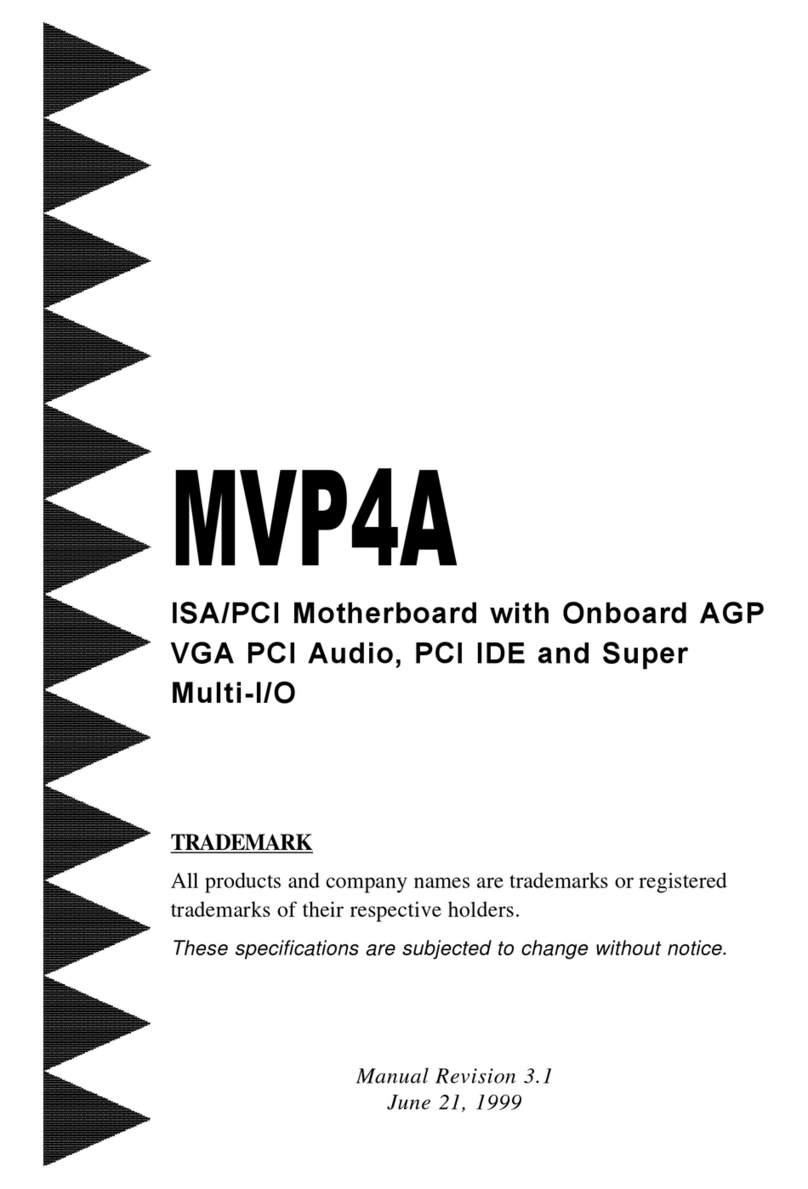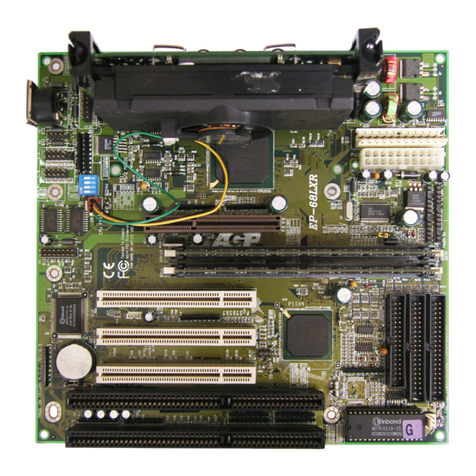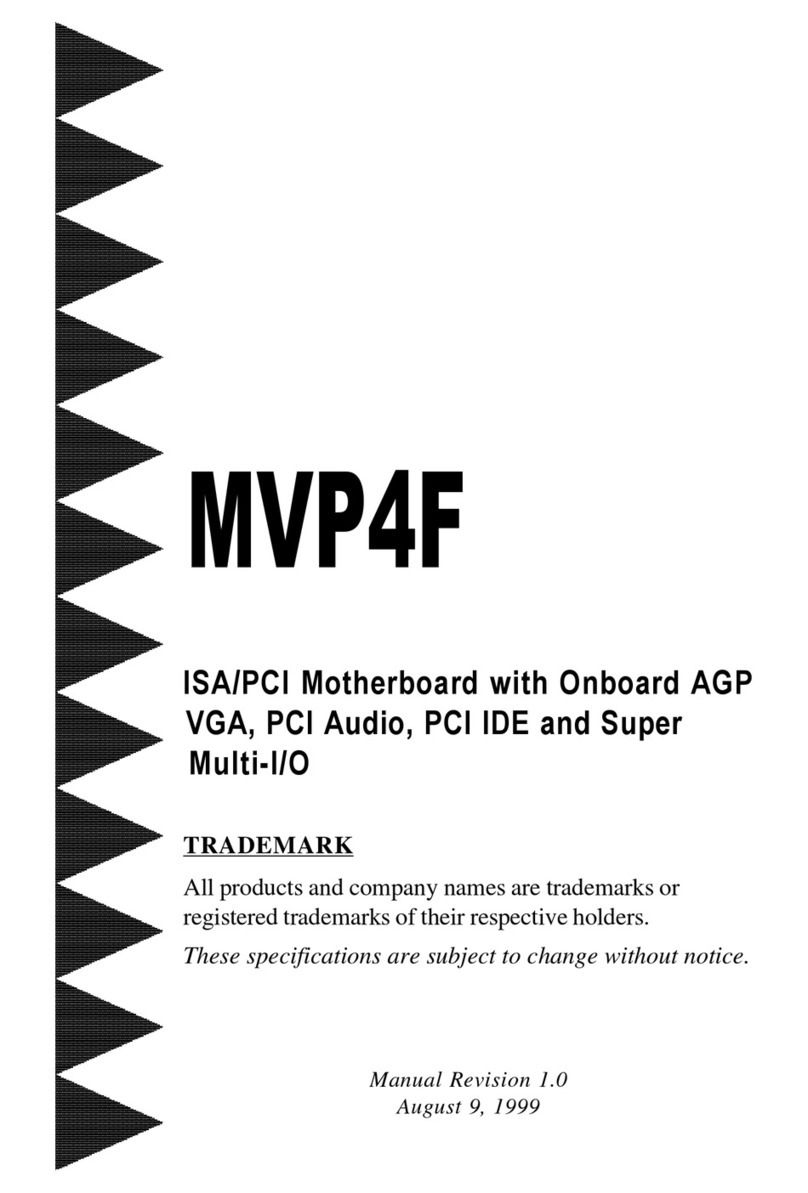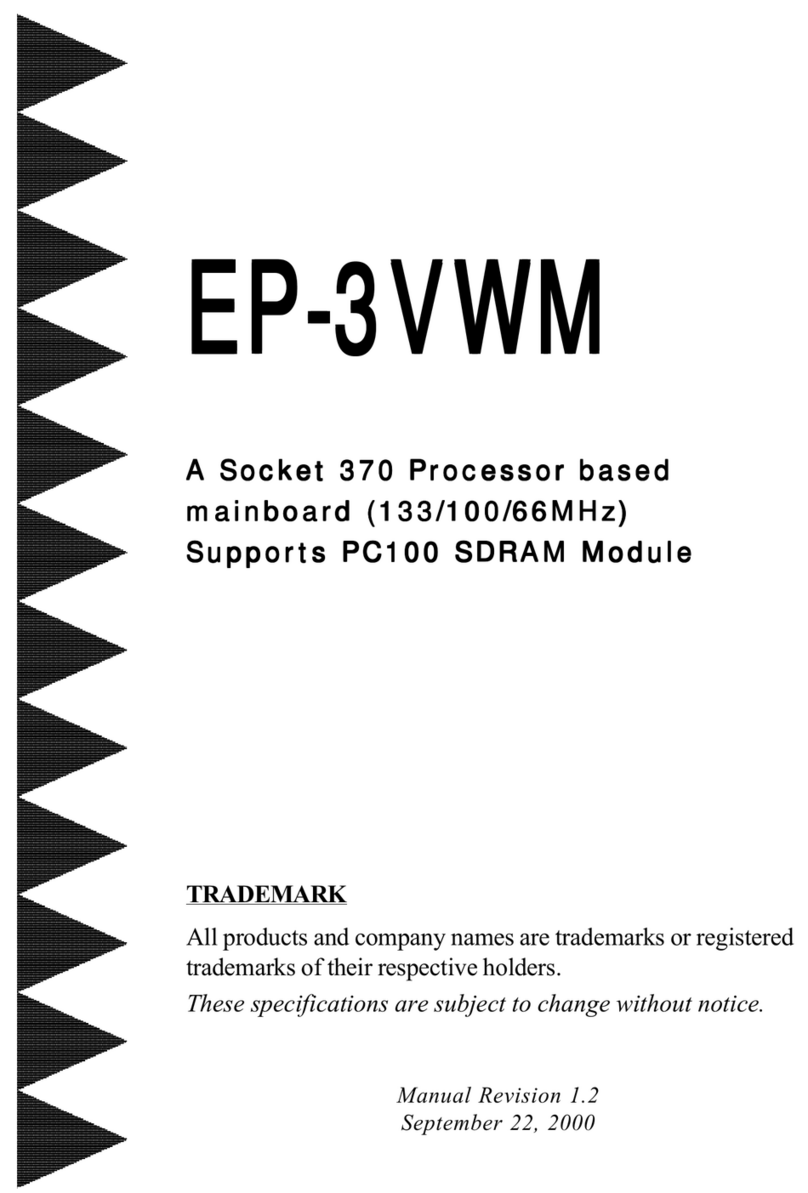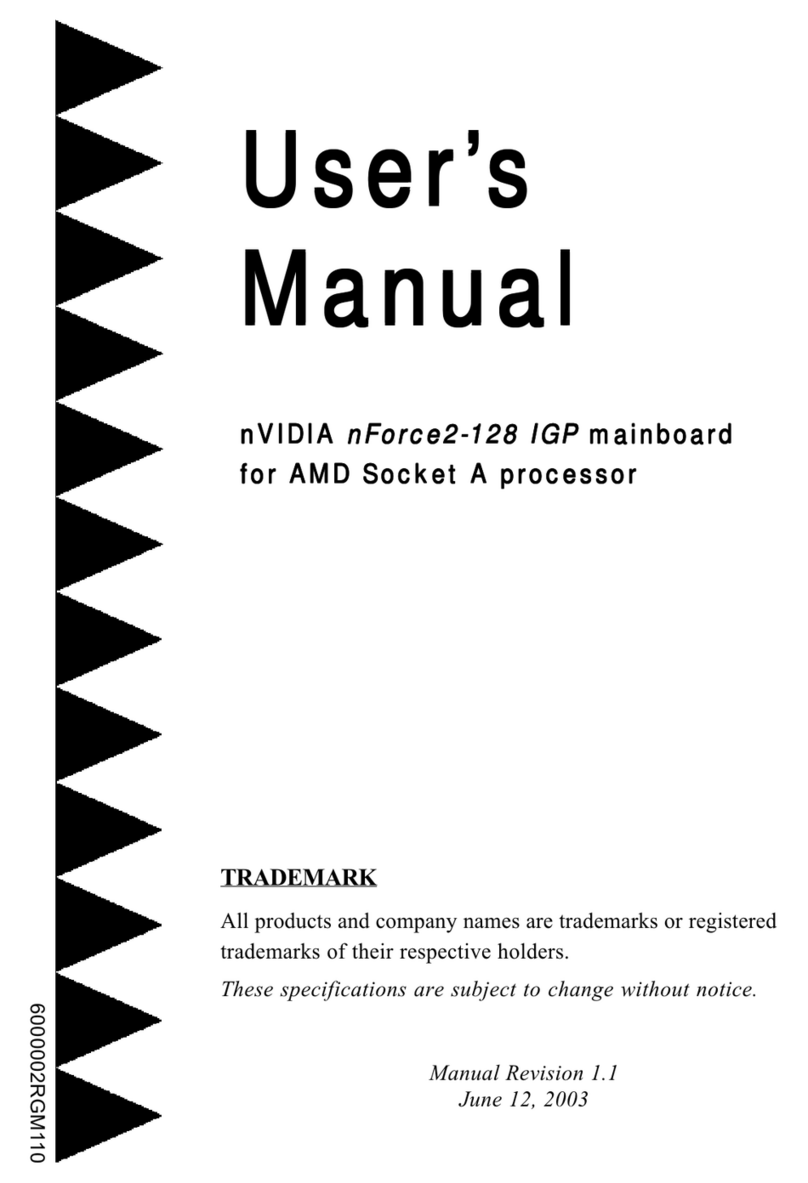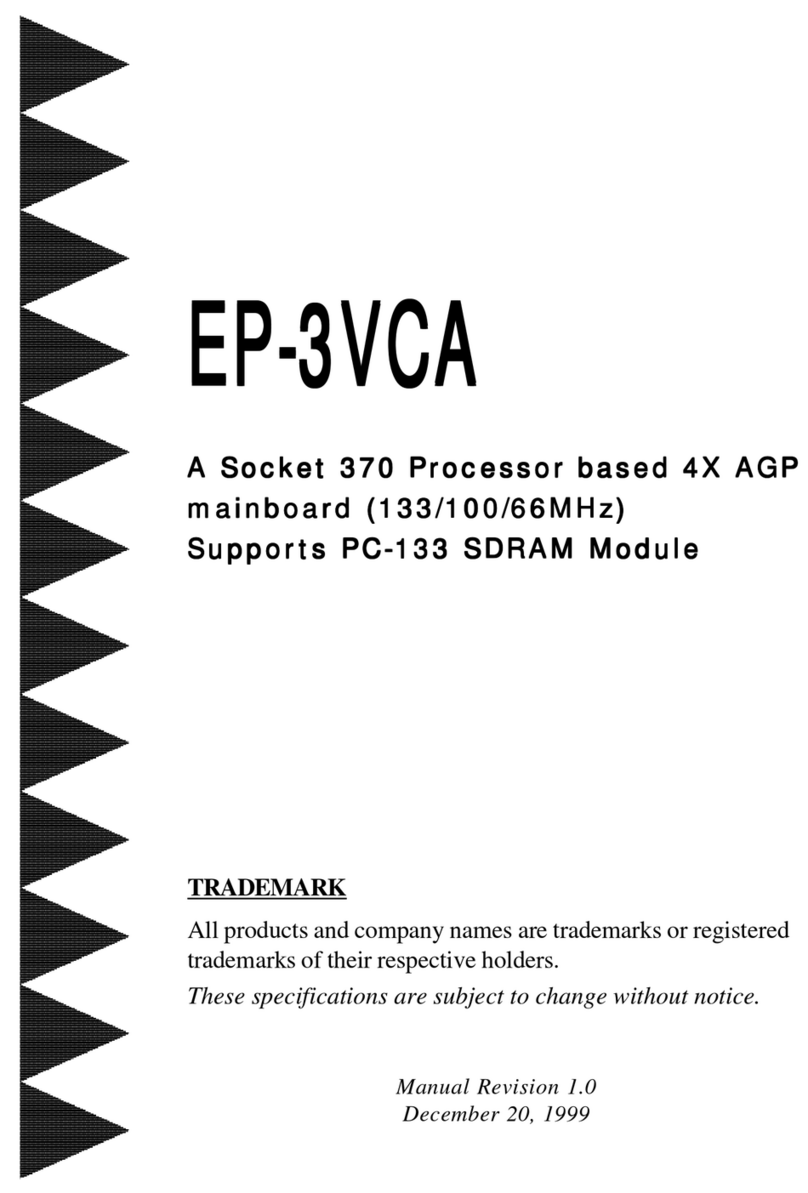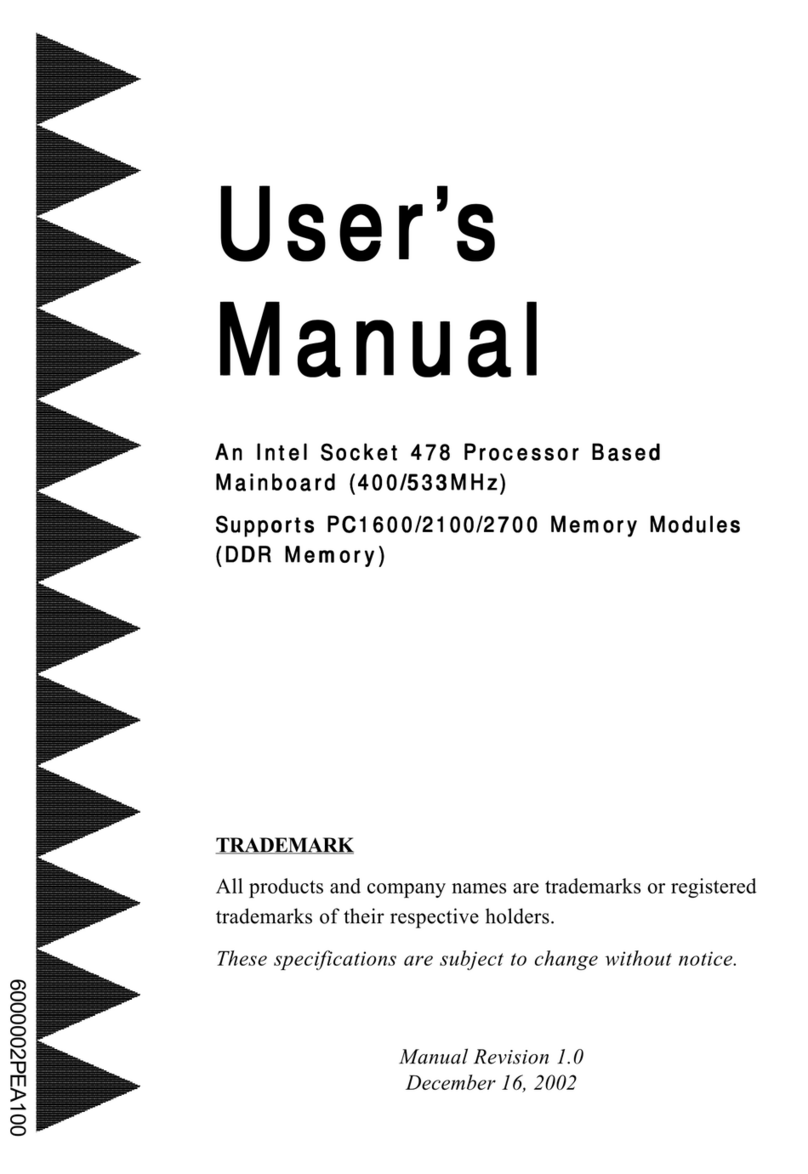
Contents
page
Chapter1-Introduction................................................... 1-1
Chapter 2 - Hardware Design ......................................... 2-1
2-1 Overview ..................................................................2-1
2-2 Connectors and Jumpers ............................................2-3
2-3 Real Time Clock Battey Replacement ..........................2-7
2-4 System Memory Configuration ...................................2-8
2-5 Cache Memory Configuration ....................................2-9
2-6 Integrated PCI Bridge .................................................2-10
Chapter 3 -ATX PowerConnector
3-1 External Madem Ring-in Power-On and Keyboard Power
onFunctions................................................. 3-2
Chapter 4 -Award BIOS Setup ........................................ 4-1
4-1 Standard CMOS Setup ...............................................4-2
4-2 BIOS Features Setup ..................................................4-2
4-3 Chipset Features Setup...............................................4-6
4-4 Power Management Setup ..........................................4-8
4-5 Plug & Play/PCI Configuration....................................4-11
4-6 Integrated Peripherals.................................................4-14
4-7 Load Setup Defaults ...................................................4-16
4-8 Change Supervisor or User Password .........................4-17
4-9 IDE HDD Auto Detection ...........................................4-18
4-10 HDD Low Level Format ..............................................4-20
4-11 Save & Exit Setup .......................................................4-20
4-12 Exit WithoutSaving ....................................................4-20
Chapter5-TechnicalInformation....................................5-1
5-1 I/O & Memory Map....................................................5-1
5-2 Time & DMA Channels Map ......................................5-2
5-3 Interrupt Map.............................................................5-2
5-4 RTC & CMOS RAM Map ...........................................5-3
AppendixA:POSTCodes...................................................................5-4
AppendixB:I/OConnectors...............................................................5-8
SystemBlockDiagram ............................................. 1-3
P55-BTLayout ........................................................ 1-4



